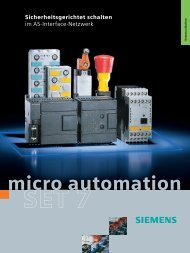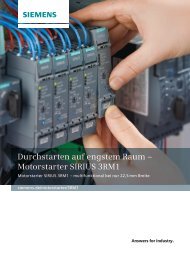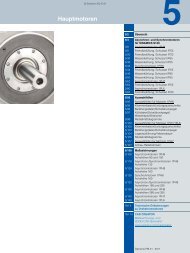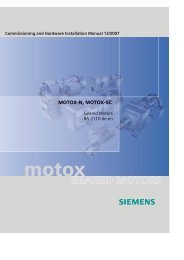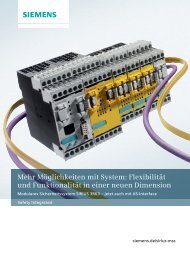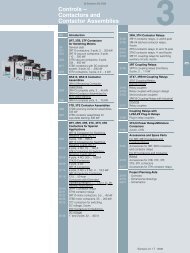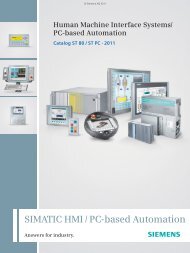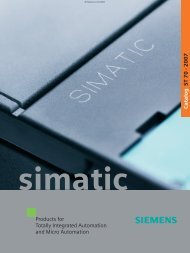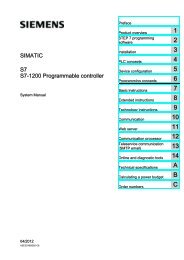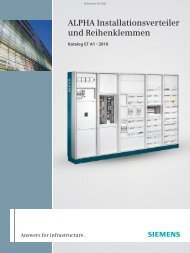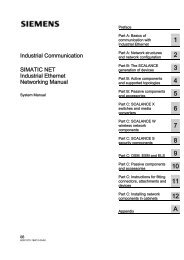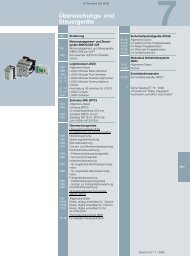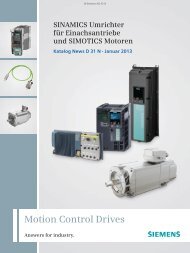Catalog ST PCS 7.1 - September 2005
Catalog ST PCS 7.1 - September 2005
Catalog ST PCS 7.1 - September 2005
Create successful ePaper yourself
Turn your PDF publications into a flip-book with our unique Google optimized e-Paper software.
■ Overview<br />
SIMIT is a powerful simulation platform which is integrated into<br />
the SIMATIC <strong>PCS</strong> 7 engineering by means of open interfaces,<br />
but which remains open for functional expansions as a result of<br />
its modular design. You do not need to be a specialist to generate<br />
and apply simulations with SIMIT. It is merely necessary to<br />
use SIMIT’s graphic desktop – all mathematical and IT procedures<br />
of a simulation are carried out invisibly by SIMIT in the<br />
background.<br />
As a test platform for SIMATIC user software, SIMIT provides a<br />
high scope of performance: it can be used on the one hand to<br />
automatically configure signal tests, or also to simulate processes<br />
and complete plants of any complexity in real-time.<br />
SIMIT provides the appropriate simulation environment whether<br />
you are interested in a simple key-triggered PLC signal test, testing<br />
of the field level, physical simulation of the process response<br />
for a complete plant test, or for operator training.<br />
SIMIT is designed such that its functionality and scope can be<br />
specifically adapted to individual requirements. The basic system<br />
already provides powerful simulation functions. Hardware<br />
and software modules can be used to specifically expand the<br />
SIMIT functionalities.<br />
Simulation is supported by appropriate automated functions. For<br />
example, importing of the symbol table or a list of signal names<br />
generated using Excel is sufficient for automatic configuration of<br />
the signal links. The associated control and display elements are<br />
also generated automatically. Sample solutions created using<br />
the <strong>PCS</strong> 7 Import/Export Assistant (IEA) can be imported into<br />
SIMIT to generate equivalent simulation patterns.<br />
■ Function<br />
A simulation model is produced with SIMIT simply by "plugging<br />
together" individual components. These components are selected<br />
from a library, positioned on a chart, connected together,<br />
and parameterized.<br />
Simulation<br />
SIMIT: Simulation-based engineering<br />
Engineering on the PC with SIMIT<br />
The SIMATIC user program generated in SIMATIC <strong>PCS</strong> 7 is<br />
loaded into the PLC simulation S7-PLCSIM, and receives the<br />
simulated I/O signals from SIMIT via the PLCSIM coupling. The<br />
interface is configured automatically in SIMIT by importing the<br />
symbol table from SIMATIC <strong>PCS</strong> 7. SIMIT can also generate the<br />
corresponding simulation environment automatically using the<br />
<strong>PCS</strong> 7 Import/Export Assistant (IEA). Simulation examples<br />
matched to example automation solutions are used for this. The<br />
complete interaction between automation and process (model)<br />
is completed by means of a process model.<br />
If the <strong>PCS</strong> 7 operator station (WinCC) is coupled to PLCSIM, the<br />
complete automation function from the sensor to the automation<br />
and visualization systems and back again to the actuator can already<br />
be tested on the <strong>PCS</strong> 7 engineering system in the technical<br />
office without the actual existence of the automation hardware.<br />
<strong>PCS</strong> 7 engineering <strong>PCS</strong> 7 HMI<br />
Signals<br />
Hardware<br />
configuration<br />
SIMIT<br />
Devices (IEA)<br />
Actuators<br />
& sensors<br />
Process<br />
User<br />
software<br />
Siemens <strong>ST</strong> <strong>PCS</strong> <strong>7.1</strong> · <strong>September</strong> <strong>2005</strong><br />
8/5<br />
8




